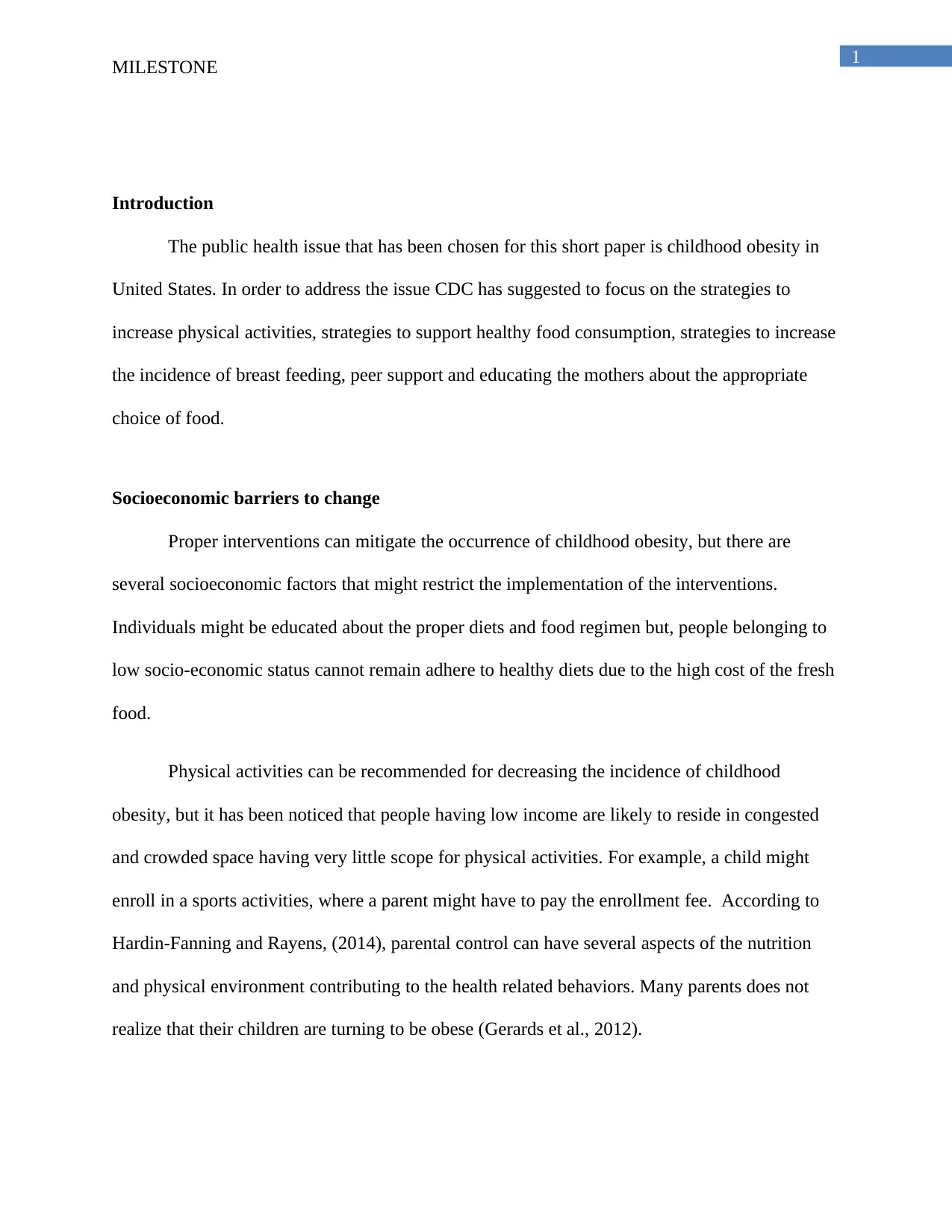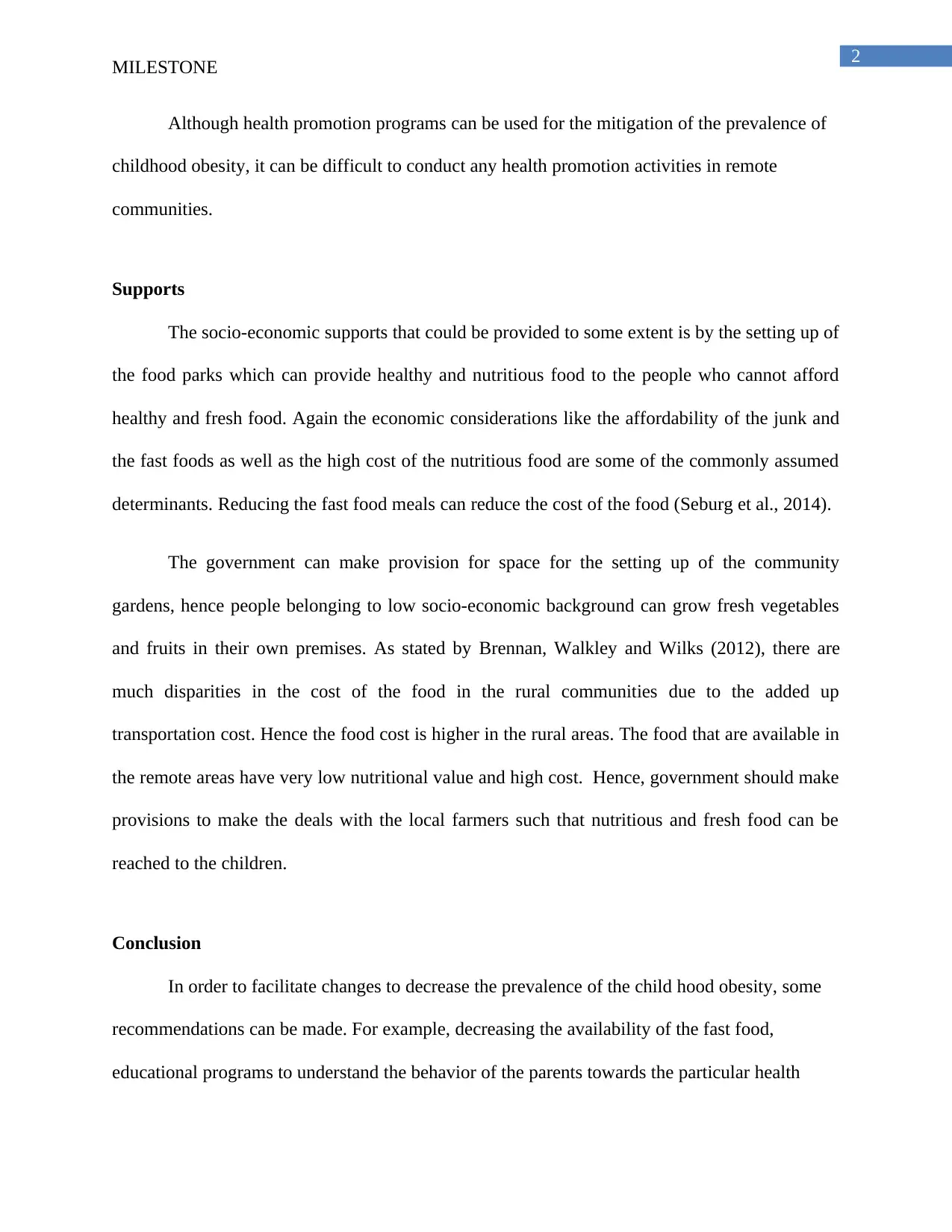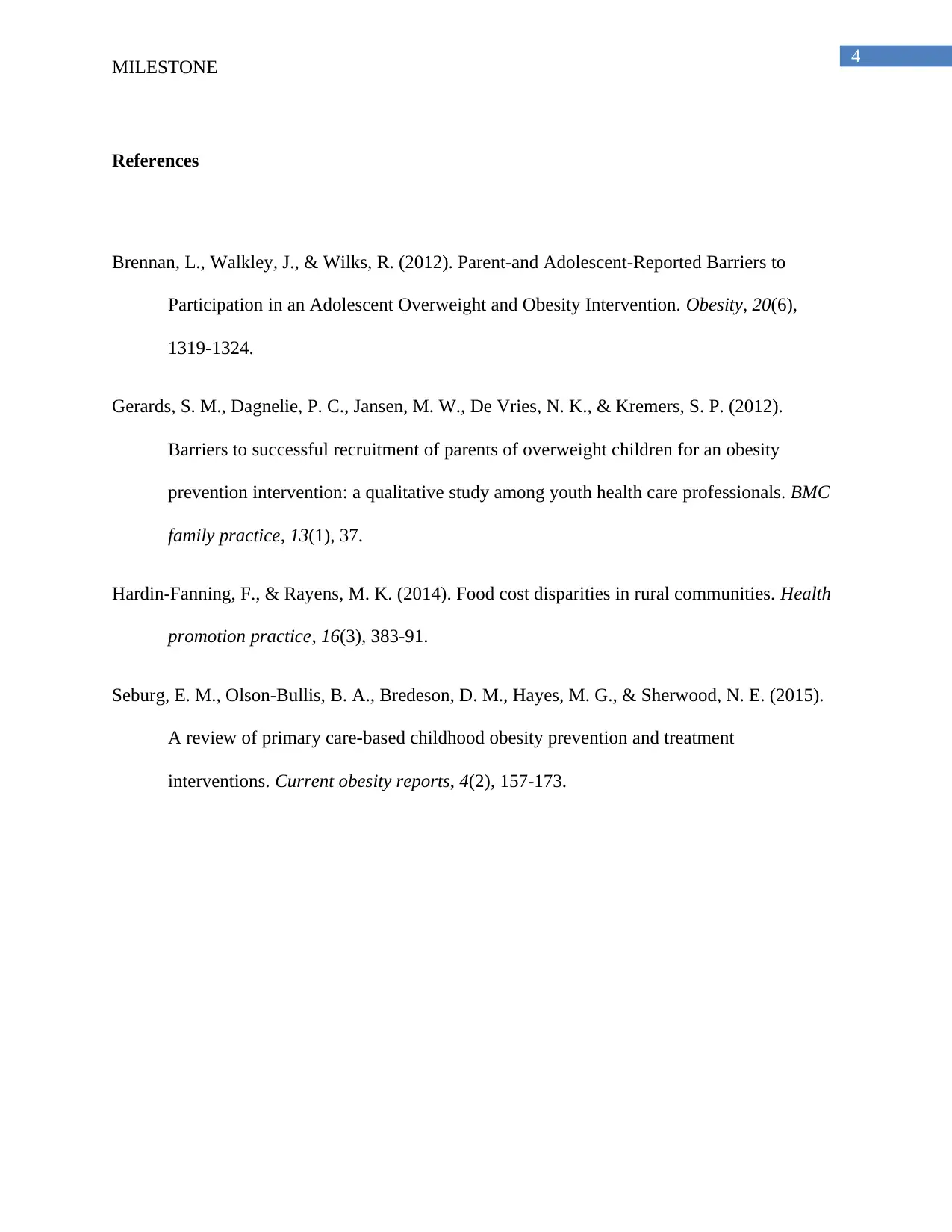HCM 320: Evaluating Policy for Childhood Obesity Interventions
VerifiedAdded on 2023/04/23
|5
|807
|168
Report
AI Summary
This report addresses the public health issue of childhood obesity in the United States, focusing on strategies recommended by the CDC, such as increasing physical activity, promoting healthy food consumption, and supporting breastfeeding. It identifies socioeconomic barriers to change, including the high cost of fresh food and limited access to safe spaces for physical activity in low-income communities. The report suggests socioeconomic supports like food parks, community gardens, and government deals with local farmers to provide nutritious food. Recommendations include decreasing fast food availability, implementing educational programs, and establishing community gardens. The report concludes by encouraging readers to advocate for these changes through online forums and legal channels. Desklib is a great platform to find more resources on this subject.
1 out of 5











![[object Object]](/_next/static/media/star-bottom.7253800d.svg)